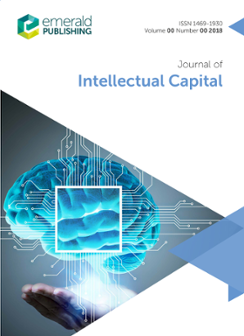绿色智力资本的构成要素是否会影响员工的绿色行为?用偏最小二乘法对印度能源部门进行实证分析
IF 6.8
2区 管理学
Q1 BUSINESS
引用次数: 3
摘要
目的探讨绿色智力资本(GIC)维度与员工绿色行为(EGB)的关系。设计/方法/方法在印度能源部门组织的随机代表性员工群体中进行了一项调查,以收集本研究的数据。探索性因子分析(EFA)的GIC支持在其结构中包含新的维度。验证性因子分析(CFA)验证了测量模型。采用偏最小二乘法的结构方程模型对假设关系进行了检验。研究结果证实,GIC的所有四个维度对EGB都有不同程度的显著正向影响。本研究运用自然资源基础理论和社会认知理论(SCT)拓展了对GIC概念及其与EGB关系的理解,对现有文献有所贡献。本研究以印度等发展中国家为背景,实证考察了GIC与EGB之间的关系。此外,与现有文献将GIC分为绿色人力资本(GHC)、绿色结构资本(GSC)和绿色关系资本(GRC)不同,本研究将绿色精神资本(GSpC)确定为GIC的另一个重要维度,它是一种无形资产,与影响绿色行为等利他行为高度相关。该研究为管理者和决策者通过投资政府投资资源来确保EGB提供了重要的启示。本文章由计算机程序翻译,如有差异,请以英文原文为准。
Can the components of green intellectual capital influence employee green behavior? An empirical analysis on Indian energy sector using the partial least squares method
PurposeThe study aims to explore the relationship between the dimensions of green intellectual capital (GIC) and employee green behavior (EGB).Design/methodology/approachA survey has been conducted among a random representative population of employees working for the energy-sector organizations in India to collect data for this study. Exploratory factor analysis (EFA) for GIC supports the inclusion of the new dimension in its construct. Confirmatory factor analysis (CFA) validates the measurement model. Hypothesized relationships have been examined by applying structural equation modeling using partial least squares method.FindingsResults corroborate that all the four dimensions of GIC have varying degrees of significant positive impact on EGB. The study contributes to the existing literature by extending the understanding of the concept of GIC and its connection with EGB using natural-resource based theory and social cognitive theory (SCT).Originality/valueThe study has empirically examined the relationship between GIC and EGB in the context of a developing country like India. Moreover, unlike the existing literature that have classified GIC into green human capital (GHC), green structural capital (GSC) and green relational capital (GRC), the study identifies green spiritual capital (GSpC) as another important dimension of GIC which is an intangible asset and highly relevant in influencing altruistic activities like green behavior. The study presents significant implications for managers and policy-makers for ensuring EGB by investing in GIC resources.
求助全文
通过发布文献求助,成功后即可免费获取论文全文。
去求助
来源期刊

Journal of Intellectual Capital
Multiple-
CiteScore
14.50
自引率
13.30%
发文量
27
期刊介绍:
The Journal of Intellectual Capital is a peer-reviewed international publication dedicated to the exchange of the latest research and best practice information on all aspects of creating, identifying, managing and measuring intellectual capital in organisations. The journal publishes original research and case studies by academic, business and public sector contributors on intellectual capital strategies, approaches, frameworks, tools, techniques and technologies in order to increase the understanding of intellectual capital within the context of the modern knowledge economy. The focus of this journal is on the identification of innovative intellectual capital strategies and the application of theoretical concepts to real-world situations.
 求助内容:
求助内容: 应助结果提醒方式:
应助结果提醒方式:


